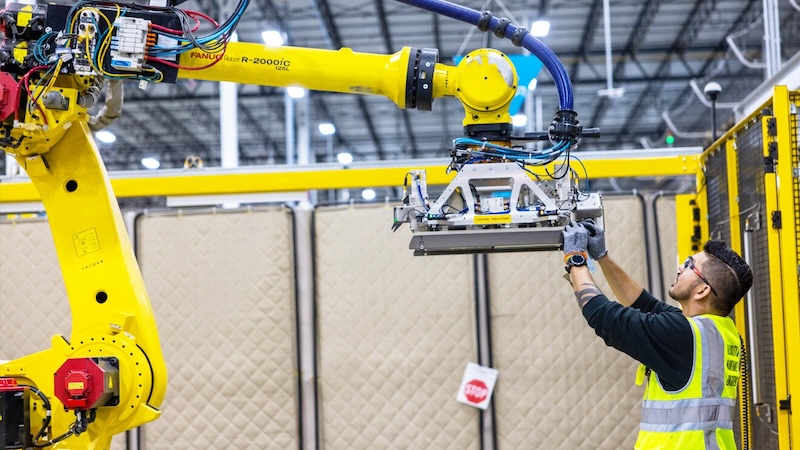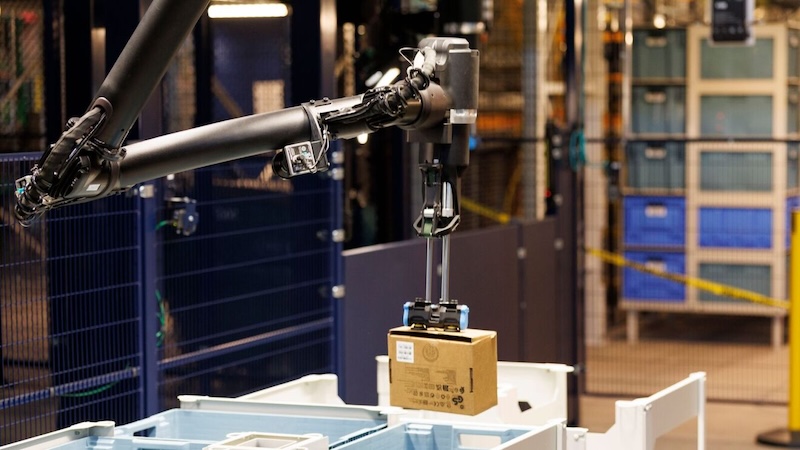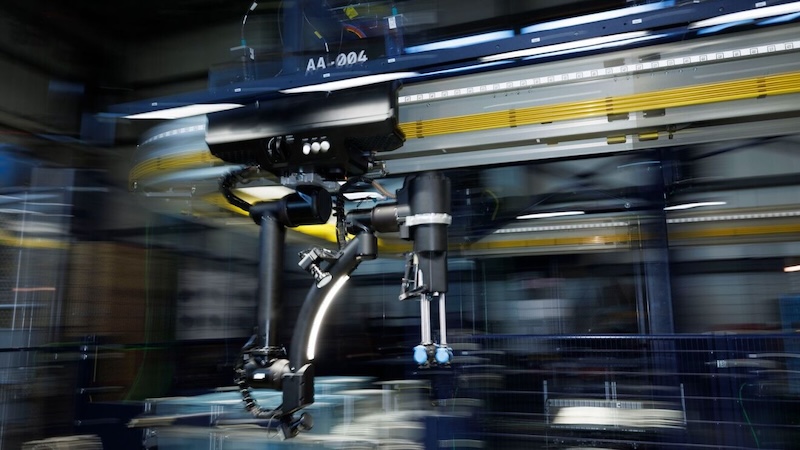Amazon has revealed two major innovations designed to enhance its fulfillment and operations network: a new robotics system called Blue Jay and an agentic artificial-intelligence model known as Project Eluna.
These technologies aim to reduce repetitive tasks, improve safety and support employee decision-making, while further accelerating delivery performance across Amazon’s network.
According to Amazon, Blue Jay is a ceiling-mounted automation system that synchronises multiple robotic arms in a single station to carry out picking, stowing, and consolidation processes that previously would have required separate robotic stations.
Developers say the system “collapses what used to be three separate robotic stations into one streamlined workspace”.
The company reports that the system was conceived and brought to production in just over a year, compared to the multi-year rollout of previous systems.
Blue Jay is already being piloted at a facility in South Carolina, where it is handling about 75 percent of the full range of item types stored at that site.
On the AI front, Project Eluna is being positioned as an “extra teammate” for operations managers. Rather than relying on dozens of dashboards, managers can ask questions such as “Where should we shift people to avoid a bottleneck?” and receive data-driven recommendations.
The system combines historical and real-time data to anticipate operational issues and recommend actions. Initial deployment is scheduled in a Tennessee fulfilment centre this holiday season, focused on sortation optimisation.
Amazon emphasises that both innovations are designed with frontline employees in mind – to reduce physically demanding tasks, improve ergonomics and open up new career pathways.
Tye Brady, chief technologist for Amazon Robotics, says: “Our latest innovations are great examples of how we’re using AI and robotics to create an even better experience for our employees and customers.
“The goal is to make technology the most practical, the most powerful tool it can be – so that work becomes safer, smarter, and more rewarding.”
These launches build on Amazon’s earlier systems such as DeepFleet, a foundation model coordinating large fleets of robots, and the “Vulcan” robotics arm with tactile capability.
While Amazon does not release full deployment numbers for Blue Jay and Eluna yet, the announcement signals a significant step in the company’s broader push to automate key parts of its logistics and fulfilment operations.
For customers, the aim is faster delivery and more efficient operations. For employees, Amazon says the focus is on smarter tools and safer work.
Brady says: “The real headline isn’t about robots. It’s about people – and the future of work we’re building together.”



